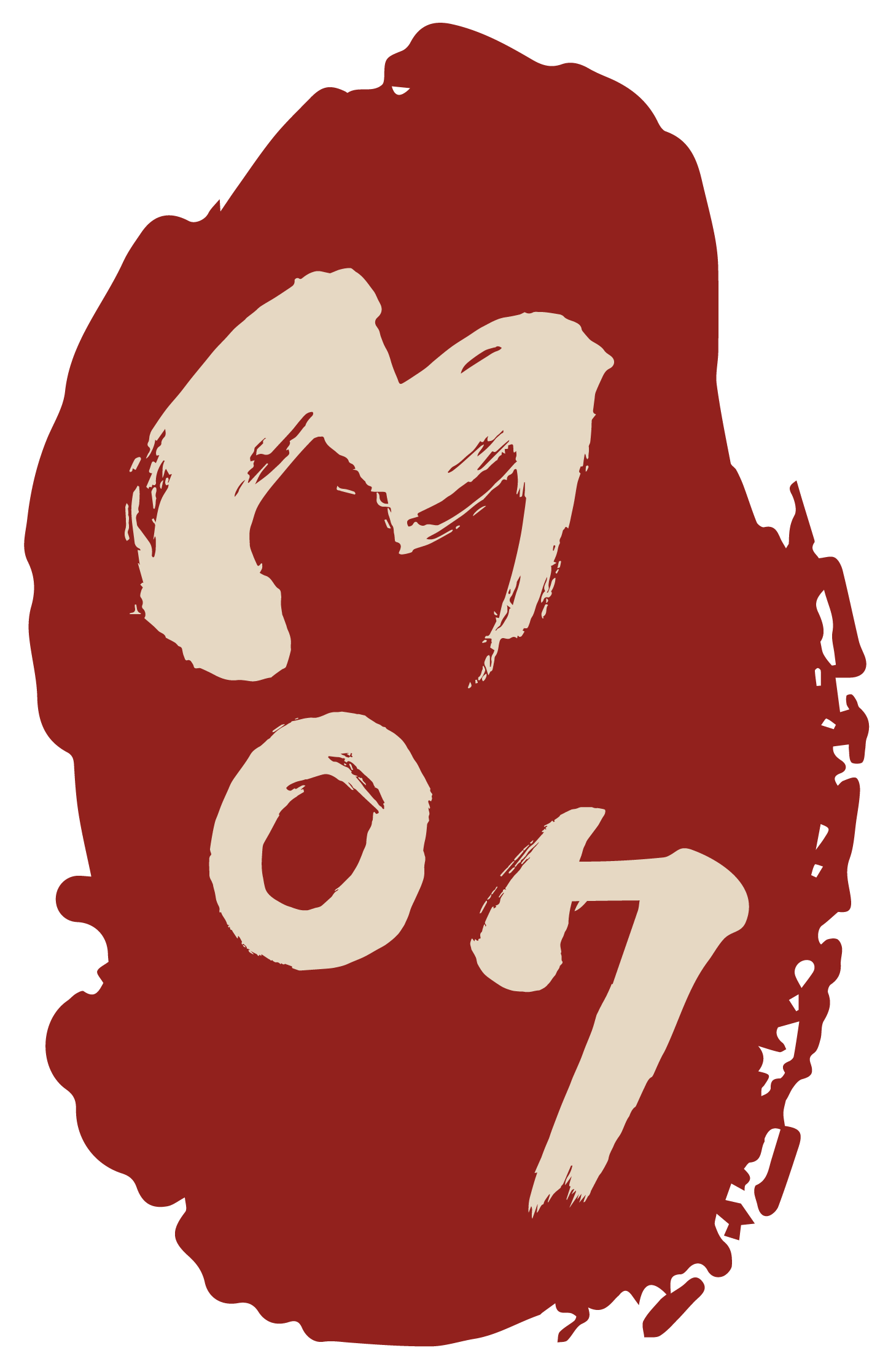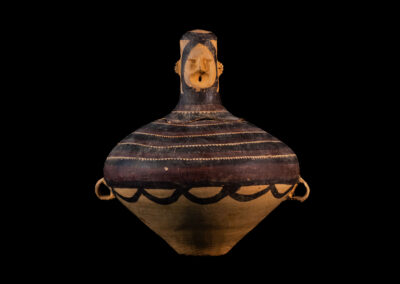Funerary Urn with Shoulder-Head Attachment
Urn
Funerary urn of Yang-shao-Culture consists of two main parts: the body of the vessel and the anthropomorph shoulder-head attachment. Yellow clay with violet-black painting.
Object ID
Neo_002
Age
2200 – 1500 BC
Material
Ceramics
Color
yellow, violet and black
Height
(coming soon)
Diameter
(coming soon)
Condition
Good
Price
on request
Description [1]
This funerary urn of Yang-shao-Culture is a very rear and extraordinary example as a completely preserved two-part burial vessel. There is the body of the vessel and the anthropomorph shoulder-head attachment. The urn has a convex shape on the upper and a concave on the lower part and a small flat bottom. Two eylet handles are attached at the widest point of the reveal. The edge finish on the shoulder shows a five-wavy design. This place laid how finely the walls of the vessel were designed and why they were quite lightweight. Potters preferred „yellow earth“ existing in high quantities under the loess around the area of the Yellow River. While fine yellow clay was used for the design of the body of the urn, the painting with ground natural substances in red-violet, black and white took place before firing in the kiln. [2]
In the overall view (with attachment) the painting appears in six concentric double-tapes of violet and black colors and five white so-called „sawtooth belts“ which were firstly interpreted as motifs for death by the Swedish archaeologist Johan Gunnar Andersson. Since the 1920th closely connected to excavations in China he came to the conclusion that those motifs only exist on vessels of ceramics which were brought to light from graves. [3] At the hight of the handles the vessel is surrounded by a black garland. The bottom is dark-yellow and has traces from burning support. The lines indicate the spread of such vessels through Central Asia to Persia and the valley of the Indus. [4]
An elongated head, a cylindric neck and broad shoulders form the attachment. This is hollow inside. The wavy edge fits excactly on the opening of the neck-shoulder line. On the frontside of the head is a face possibly of a shaman [5] or an ancestor [6] with slightly modelled closed eyes, a more contoured nose and a depressed mouth area with an opening. The five-fold finely notched ears have small holes for earrings. [7] The backside of the head is painted with two upward-facing serrated bands, one at the neck, the other from the back of the head. Around the face and the top of the head is a band crossed over the forehead which frames the face. The top of the head bears a four-part motif that is framed in black.
Often is talked about the „Economism“ regarded to the Neolithic period. That means that different cultures came into contact because originally sedentary populations had to relocate due to floods and other natural disasters. [8] (HV)
________________________
[1] Datierung der neolithischen Kulturen nach den Resultaten der Analysen mit dem Karbon-14-Test. In: Beurdeley, Cécile und Michel (1974): Chinesische Keramik. Ein Handbuch. Hirmer Verlag München. 17-18
[2] Beurdeley, Cécile and Michel (1974): Chinesische Keramik. Ein Handbuch. Hirmer Verlag München. 14-20
[3] Beurdeley, (ibid.): 20, Abb.6/ Willetts, William (1968): Das Buch der Chinesischen Kunst. Von der Jungsteinzeit bis heute. Econ Verlag Düsseldorf, Wien. 34, Abb. 3, 27, 41
[4] Watson, William (1980): China, Kunst und Kultur. Verlag Herder Freiburg im Breisgau. 22
[5] Willetts, (ibid.): 23
[6] Lee-Kalisch, Jeonghee (1995): 3 Menschenmaske. In: Das Alte China: Menschen und Götter im Reich der Mitte. 5000 v. Chr. – 220 n.Chr.; Kulturstiftung Ruhr, Essen. Villa Hügel, 2. Juni 1995 – 5. November 1995. Veranst. Der Ausstellung: Kulturstiftung Ruhr. München, Hirmer 1995. 173 – 174.
[7] Lee-Kalisch (1995): 174
[8] Beurdeley, (ibid.): 14











